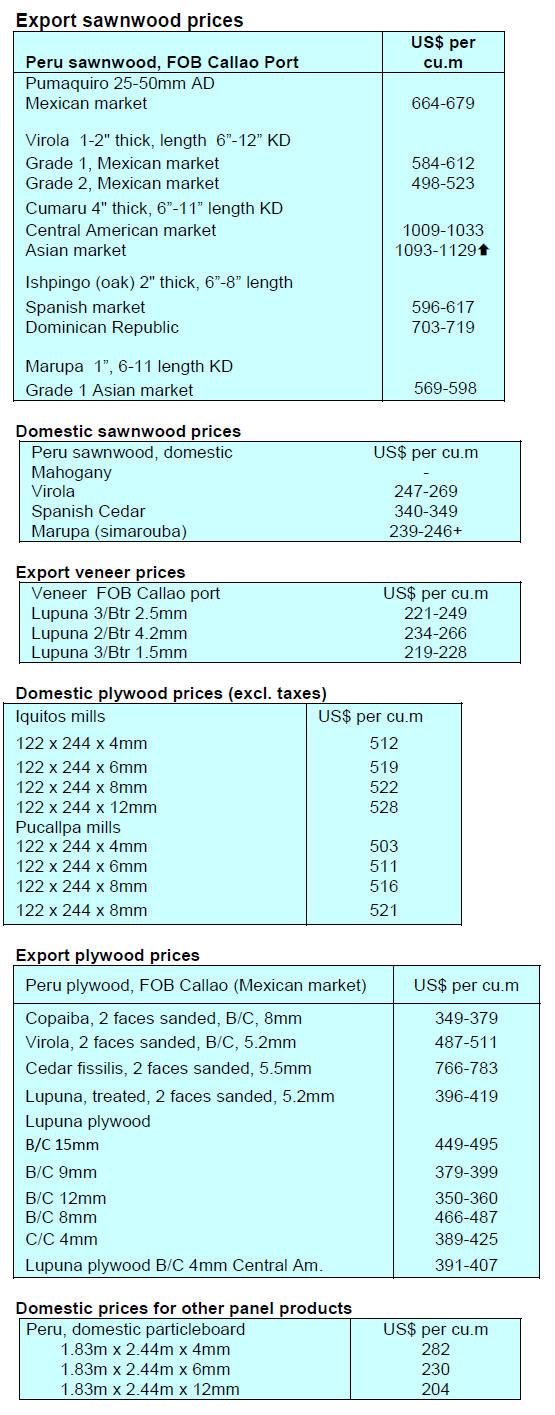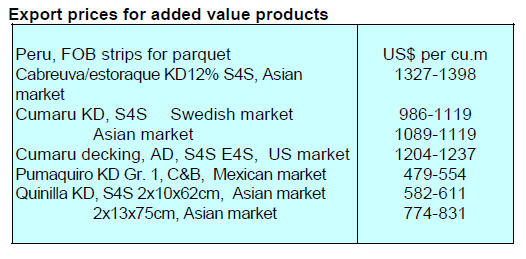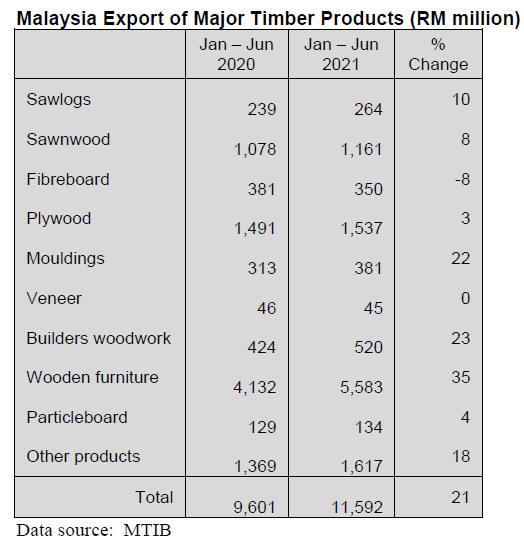
4.
INDONESIA
Exports projected to reach US$12
billion
Chairman of the Association of Indonesian Forest
Concessionaires (APHI), Indroyono Soesilo, said the value
of wood product exports is estimated to climb to US$12
billion by the end of this year. 2020 wood product exports
earnings totalled US$11 billion.
He said that up to July this year exports of wood products
amounted to US$7.5 billion and projecting this to the end
of the year results in a figure of US$12 billion. He
commented that production from the natural forest rose
over 16% up to July compared to the same period last year
but production from industrial forest plantations was lower
year on year.
In related news, the Indonesian furniture sector anticipates
that international orders could rise due to the inevitable
slow-down in production and trade in Vietnam as the
country deals with the latest surge in infections.
See:
https://ekonomi.bisnis.com/read/20210815/257/1429898/vietnam-lockdown-bawa-harapan-order-industri-furnitur-ri-terdongkrak
Furniture imports continue to climb
The Indonesian Furniture and Craft Industry Association
(HIMKI) noted that, during the first half of 2021, furniture
imports rose 36% and craft imports rose 21% year on year.
Over 75% of furniture and craft imports come from China.
See:
https://ekonomi.bisnis.com/read/20210815/257/1429895/impormebel-masih-naik-himki-siapkan-strategi-pertahankan-kinerjaindustri-furnitur
Ease of business licensing to attract investment
Coordinating Minister for Economic Affairs, Airlangga
Hartarto, has identified that easing of the business
licensing process could encourage more foreign
investment. He said Indonesia is committed to improve the
investment climate through structural reforms one of
which is the combining of 76 regulations into one through
the Omnibus Law no. 11 of 2020, theJob Creation Law.
To implement the Job Creation Law digital registration
and licensing procedures have been made easier with the
launch of the latest version of the Online Single
Submission (OSS) which is based on the Risk-Based
Approach (RBA) and the shift from the Negative
Investment List (DNI) to the Investment Positive List
(DPI).
See:
https://en.antaranews.com/news/184978/ease-of-businesslicensing-to-attract-investment-to-indonesia-govt
Accelerated recognition of customary forests
The Minister of Environment and Forestry (LHK), Siti
Nurbaya Bakar, has indicated government recognition of
customary forests now extends over 59,442 hectares with a
total of 80 units involving 42,038 families. The Minister
said efforts continue to facilitate indigenous peoples in
dealing with these matters with local authorities.
See:
https://www.antaranews.com/berita/2331198/menteri-lhktegaskan-pemerintah-terus-percepat-pengakuan-hutan-adat
Net Zero emissions by 2060 or sooner
The Indonesian government has raised its net zero
emissions target to 2060, a decade faster than previously
estimated according to the Minister of Environment and
Forestry. Indonesia updated its Nationally Determined
Contribution (NDC) submitted to the UN Framework
Convention on Climate Change ahead of the climate
summit to be held in Glasgow in November.
See:
https://jakartaglobe.id/news/indonesia-aims-to-reach-netzero-emissions-by-2060-or-sooner
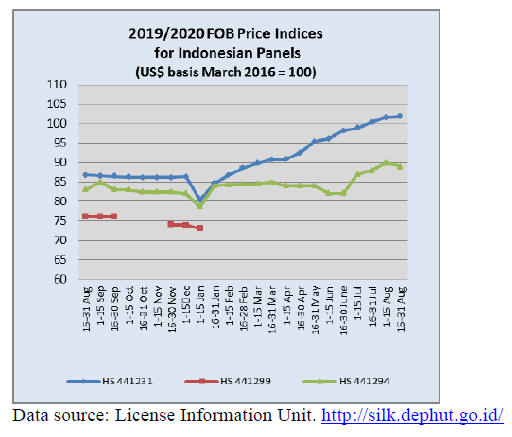
5.
MYANMAR
Covid update
While Covid-19 infections appear to be declining in
Yangon, according to the
website https://www.worldometers.info/coronavirus/count
ry/myanmar/, 389,134 cases have been recorded in the
country and 15,077 people have died. The number of cases
stood at 159,347 on 1 July and jumped to 380,879 on 27
August.
Government offices are closed until 31 August but banks
are open but individuals face problems withdrawing cash.
No cash available, currency depreciating and inflation
rising
The Central Bank has limited individual cash withdrawals
to Ks20 million but allows extra withdrawals for Covid-19
medicine. However, banks are facing cash shortages so at
times they cannot even pay the amount the Central Bank
allows. Private and government banks are in the same
situation.
In related news, the Myanmar kyat continues to weaken
against the US dollar, despite the sale of dollar reserves by
Central Bank of Myanmar (CBM). Since 1 February 2021
the CBM has released more than US$120 million into
domestic markets in an attempt to combat the rapidly
devaluing kyat.
In addition to a weakening local currency the inflation
rate, which was 6% in mid August, is expected to increase
in the coming months according to the World Bank’s
Myanmar Economic Monitor.
With the depreciation of Myanmar kyat trade and
logistical restrictions prices of imported goods have
increased significantly. Fuel prices have jumped nearly
50%.
See:
https://elevenmyanmar.com/news/continued-cash-shortagespose-dim-prospects-for-banks-in-myanmar
Forest Joint Venture Corporation General Assembly
The Forest Joint Venture Corporation (FJV) held a
General Assembly on 31 July 2021 to review activities for
the period of 1 October 2019 to 30 September 2020. A
profit of 1.815 billion MMK (approx. US$1.10 million)
was reported.
Myanma Timber Enterprise (MTE) owns a 45% share of
FJV and the Forest Department a 10% share. On 21 June
2021 an EU Council decision put both MTE and FJV
under the restrictive measures preventing any financial
dealings with the EU.
At the General assembly the Minister of Ministry of
Natural Resources and Environmental Conservation
assured participants that conservation of natural resources
will be given priority over exploitation. However, local
reports say that, since the coup, rare-earth mining has
increased in the Kachin region and illegal logging has
expanded in the Sagaing region but security concerns and
communication restrictions have limited journalists trying
to report on post-coup Myanmar.
See:
https://www.mizzima.com/article/military-rule-could-meanfew-environmental-protections-myanmar
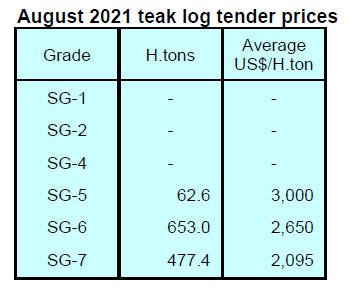
6. INDIA
Rapid decline in
infections after second wave
India has started to emerge from a second wave of
COVID-19. The decline in the number of reported
infections has been surprisingly sharp and has been similar
to the trends seen in parts of Europe. About 15% of adults
in India have received both vaccine shots and nearly 40%
a single shot. A record 8.8 million shots were administered
on 17 August. Health officials are forecasting a likely third
wave particularly in States with a low vaccination rate.
See:
https://theconversation.com/after-indias-brutal-coronaviruswave-two-thirds-of-population-has-been-exposed-to-sars-cov2-165050
Sawnwood and veneer wholesale prices moved higher
in July
The Office of the Economic Adviser, Department for
Promotion of Industry and Internal Trade, has released
wholesale price indices for July, 2021. The index for
manufactured products increased to 132.0 in July from
131.5 for June.
Out of the 22 manufactured product groups, 13 saw an
increase in prices; 8 groups saw a decline and for one
group the prices remained unchanged in July compared to
June. Included in the group that witnessed a drop in prices
was the furniture sector.
The annual rate of inflation in July was 11% higher than in
July 2020 but slightly down compared to June.
The press release from the Ministry of Commerce and Industry
can be found at:
http://eaindustry.nic.in/cmonthly.pdf

Export recovery continues
After a record US$35.2 billion exports in July export
shipments in August got off to a good start bringinning in
US$7.4 billion in the first week of the month. Early data
from the Ministry of Commerce showed while exports
grew 50% in the first week of August, imports shot up
70% to US$10.5 billion pushing up the trade deficit. After
the second wave of infections there was a significant
increase in domestic economic activities.
The US accounted for most of the increase in exports
during the first week of August followed by UAE and
Saudi Arabia. United Arab Emirates led the increase in
Indian imports followed by China and Nigeria during the
same period.
Uttar Pradesh government to make more land available
for industry
In an effort to attract investment in manufacturing the
Uttar Pradesh government has decided to make more land
available for industry. At a recent meeting between the
State Minister of Industry, the Chief Secretary and key
officials it was suggested that the process of acquiring land
should be simplified.
The state is also considering an amendment of regulations
that could provide for leasing of agricultural land for
industrial parks.
In related news, the massive plantation drive by the Uttar
Pradesh government over the past four years has increased
the state’s forest cover by 127 square kilometres. The
Forest Survey of India says the the forest cover in Uttar
Pradesh is 3.05% against the national average of 2.89%.
The state government’s plantation campaigns have
increased the awareness in people about trees and
environment.
Plantation teak
Shipments of Teak logs and sizes have taken place from
these countries. The price curve is showing that freight
factor is coming down.
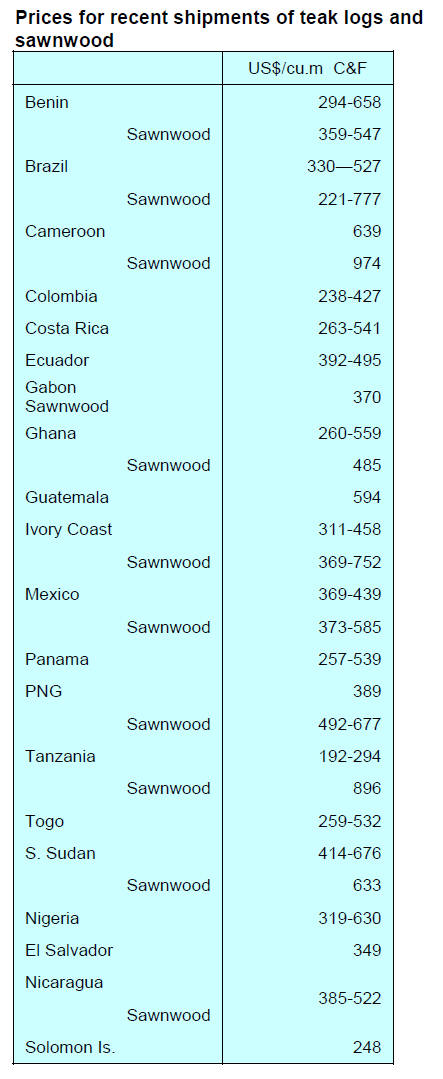

7.
VIETNAM
Expanding domestic timber production
Vietnam aims for a 5-5.5% expansion in domestic forestry
production annually between 2021-2025 according to a
government decision approving an investment policy for
sustainable forestry development over the next five years.
In 2025 income from planted production forest is expected
to rise about 1.5 times compared to that in 2020.
Under Resolution No. 84/NQ-CP Vietnam’s forestry
sector “be developed into a modern, effective and
competitive sector with strong production chains”.
The sustainable forestry development programme targets
the sustainable management, protection, development and
exploitation of forests to create jobs, protect the
ecosystem, strengthen capacity to adapt to climate change,
and protect national defence and security.
The programme will focus on maintaining the forest
coverage at 42% and developing new areas in 2021-2025.
See:
https://en.vietnamplus.vn/forestry-production-expected-torise-55-percent-annually-in-20212025-period/206054.vnp
Production suspended – exports affected
In the first seven months of this year Vietnam's wood and
wood product (W&WP) exports earned US$9.6 billion, up
55% year-on-year. However, the suspension of production
at local wood processing enterprises due to the COVID-19
pandemic is having effects on exports, according to the
Vietnam Timber and Forest Product Association
(VIFOREST).
Many members of the Ho Chi Minh (HCM) City Fine Arts
and Woodworking Association (HAWA) have outstanding
orders from overseas but because of the recent surge in
infections and the control measures being enforced
factories have experienced severe production problems
and more than half the works force in the industry has
been laid off according to VIFOREST.
In the Southern region, a major producer of wood products
for export, had 265 wood processing enterprises with a
total of 119,300 employees before the covid control
measures were introduced, now only 141 enterprises are
now in operation with 30,700 employees.
HCM City, Dong Nai, Binh Dương and Tay Ninh have
reported 134 wood processing enterprises suspended
production as they were unable to implement the “3 onsite”
model, which involves workers living on site.
Businesses implementing this model face additional costs
due to the testing of thousands of employees.
The other issue is that to maintain production enterprises
still have to secure raw materials, chemicals, packaging
and other requirements and also process export documents
through Customs and their banks which creates a risk of
infection.
VIFOREST has proposed that the Government allows the
association and the businesses to buy COVID-19 vaccines
and vaccinate staff and workers. The association also said
the Government should consider financial support to wood
processing enterprises. This could be in the form of a
reduction or delay in paying corporate income tax and
other taxes, delay of social insurance payments and land
rent exemption for this year. The Government could also
allow enterprises to extend loan payments and restructure
debts.
The association has requested the Ministry of Industry and
Trade to add raw materials for the wood processing
industry to the list of essential goods to ensure the supply
chain.
See:
https://vietnamnews.vn/economy/1016895/covid-19-production-suspension-hampering-timber-exports.html
Export/import update
According to data from the General Department of
Customs Vietnam’s W&WP exports to South Korea in
July 2021 reached US$81.1 million, up 46.7% compared
to July 2020. In the first 7 months of 2021, the exports of
W&WP to the South Korean market amounted to
US$534.5 million, up 17% over the same period in 2020.
Exports of guest and dining-room furniture in July 2021
totalled US$304 million, up 10.5% compared to July 2020.
In the first 7 months of 2021, export earnings from guest
and dining-room furniture is estimated at US$2.1 billion
US$, up 58% over the same period in 2020.
Exports of W&WP in the last week of August dropped
around 14% compared to the previous week. In particular
there was a sharp drop in wooden furniture exports.
Imports of pine in July 2021 were estimated at 124,100
cu.m worth US$29 million, up 5.3% in volume and up
5.0% in value compared to June 2021; compared to July
2020, there was an increase of 116.4% in volume and an
146.3% in value.
In the first 7 months of 2021, pine imports were estimated
at 896,500 cu.m worth US$203.5 million, up 93% in
volume and 108% in value over the same period of 2020.
Imports of log and sawn wood from Africa in June 2021
reached 75,020 cu.m worth US$26.75 million, down 8.8%
in volume and 14% in value compared to May 2021; up
0.9% in volume but down 1.3% in value over the same
period of 2020.
8. BRAZIL
Interest rate jumps 1%
In August the Central Bank of Brazil (BCB) increased the
basic interest rate (Selic) by 1% to 5.25%. The increase
was aimed at dealing with rising inflation as the country
experiences surging prices because the economy is
recovering fast. Inflation in Brazil exceeded 8% in the 12
months to June, more than double the target of 3.75% for
2021.
Forest concessions represent a tool to eliminate
degradation and deforestation
The State of Pará, one of the main timber producing states
in the Amazon Region, considers forest concessions an
instrument to reduce the risks to forests and generate direct
jobs. In the state public forests in the Mamuru-Arapiuns
Region were included in the 2009 Annual Forestry Grant
Plan (PAOF) and licensed in 2010.
Since 2010 forest degradation in concession areas has
fallen and this coincided with the enforcement of SFM by
the Pará State Institute for Forestry Development and
Biodiversity (IDEFLOR-Bio). Currently any deforestation
in the Mamuru-Arapiuns area is outside the forest
concessions.
The State Secretariat of the Environment (SEMAS),
through its Integrated Center for Environmental
Monitoring (CIMAM) carries out the environmental
monitoring of Sustainable Forest Management Plans
(SFMP) in forest concessions in Pará state.
Furniture production booming
Furniture production in Brazil reached 31.7 million pieces
in May 2021 representing a 6.5% increase in the number
produced compared to the previous month according to the
Brazilian Association of Furniture Industries
(ABIMÓVEL).
The accumulated production in this sector between
January and May expanded 29.5% over the same period in
2020.
By way of comparison, production in the manufacturing
industry as a whole saw a 15% increase in the first five
months of 2021 compared to the same period of the
previous year when all industrial sectors were affected by
the Covid-19 control measures.
In terms of employment, despite just a slight increase in
May 2021 in the furniture sector, for the first five months
of the year there was a significant rise in job creation and
this pushed up average earnings for workers.
Export update
In July 2021, Brazilian exports of wood-based products
(except pulp and paper) increased almost 74% in value
compared to July 2020, from US$269.7 million to
US$468.9 million.
Pine sawnwood exports grew 51% in value between July
2020 (US$48.9 million) and July 2021 (US$73.7 million).
In vlume terms, exports increased 4% over the same
period, from 275,200 cu.m to 286,100 cu.m.
Tropical sawnwood exports increased 33% in volume,
from 30,900 cu.m in July 2020 to 41,200 cu.m in July
2021. In value terms exports rose 26% from US$12.0
million to US$5.1 million, over the same period.
Pine plywood exports recorded a massive increase in value
in July 2021 in comparison with July 2020, from US$50.6
million to US$162.7 million. In volume terms exports
increased just 20% over the same period, from 212,900
cu.m to 255,800 cu.m.
As for tropical plywood, exports increased in volume
(43%) and in value (110%), from 5,100 cu.m (US$2
million) in July 2020 to 7,300 cu.m (US$4.2 million) in
July 2021.
As for wooden furniture export earnings increased from
US$6.6 million in July 2020 to US$71.7 million in July
2021.
Ensuring transparency in the supply chain
The members of CIPEM (Center for Timber Producers
and Exporters of Mato Grosso State), through the adoption
of Sustainable Forest Management Plans, have been able
to satisfy the requirements of European importers in terms
of verified legal origin and sustainability.
In September 2021, CIPEM will implement an integration
of a control system for timber and forest products between
the Forest Products Trade and Transport System 2.0
(SISFLORA) of Mato Grosso State and the National
System for the Control of the Origin of Forest Product
(SINAFLOR) under IBAMA to ensure transparency in the
supply chain.
This technology will provide improvements in timber
monitoring and inspection activities as well as providing a
guarantee that the forest product are of legal origin and
produced sustainably.
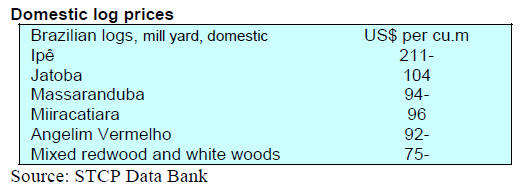
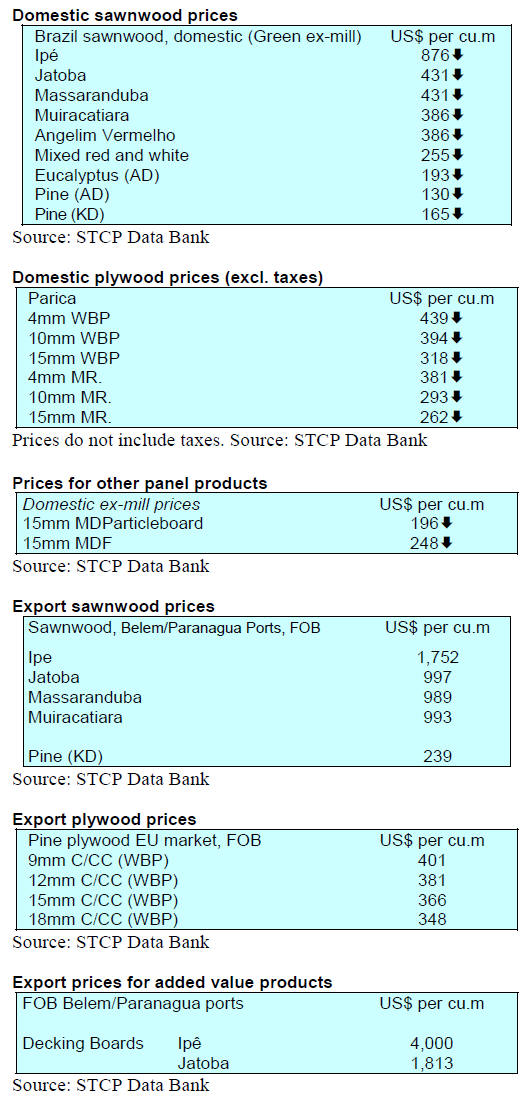
9. PERU
Covid update
As of 27 August the number of citizens infected with
COVID-19 rose to 2,148,419. A total of 18,151,872
vaccine doses have been administered and 7,955,486
people have received two doses.
Peru has reported 199 cases of the COVID-19 Delta
variant in different regions across the country according to
the Ministry of Health. The ministry and regional
governments have developed a national plan to face an
eventual third wave of COVID-19.
The aggressive delta variant is not yet widespread because
the gamma variant is currently the predominant strain but
the delta variant continues to pose a major risk.
Export shipments rising
The Association of Exporters (ADEX) has reported that in
the first half of the year exports of wooden furniture and
furniture parts reached US$1.9 million representing a 60%
increase compared to the same period of 2020 (US$1.2
million).
The ADEX Trade Data Intelligence System shows
shipments of wooden furniture and furniture parts
increased 15% more than in the first 6 months of 2019,
before the pandemic when earnings amounted to US$1.7
million.
Export earnings from wooden furniture and parts ranked
fourth in overall wood product exports (US$56.7 million)
being surpassed by semi-manufactured products (US$5.6
million), sawnwood (US$13.1 million) and wooden
construction products (US$3.4 million). Other main export
products were veneers and plywood (US$1.2 million) and
manufactured products (US$0.7 million).
Of wooden furniture exports the category "other wooden
furniture" accounted for an almost share and included
sideboards, tables, chairs, centerpieces, benches, stools,
desks, shelves, among others.
Between January and June 2021 the main export market
was the United States at US$1.3 million, an increase of
56% compared to the same period in 2020. The North
American market as a whole accounted for 66% of total
shipments. Other export markets were Chile, Italy,
Colombia and Panama.
ADEX pointed out that 2020 was the worst in the last ten
years in terms of exports of wooden furniture and parts.
Although this can be explained by the paralysis of
economic activities as a result of the pandemic, it is also
true that exports had been very volatile and irregular over
the past ten years.
Public sector investment boost to construction
Investments by regional governments has been one of the
drivers of growth in the construction sector this year
according to the Peruvian Chamber of Construction
Executive Director, Guido Valdivia.
He explained that much of the investment was in support
of the Arranca Peru (Get off the Ground, Peru) programme
implemented by the Government which aimed to revive
the economy. The National Institute of Statistics and
Informatics (INEI) has reported that the construction
sector grew over 90% year on year in June this year.
See:
https://andina.pe/ingles/noticia-peru-local-governmentspublic-investment-boosts-construction-sector-858047.aspx
Regions with the highest forest fire alerts this year
The National Forest and Wildlife Service (Serfor) reported
that, to date, it has conducted 54 virtual training courses
with the participation of 4,200 people in forest fire risk
management. The training was extended to more than 18
regions of the country.
For effective preventive work Serfor also provided
technical assistance and training aimed at local authorities,
institutions and agricultural producers to promote good
practices for the management of forest and agricultural
residues.
According to information from the Civil Defense Institute
- INDECI, during 2020 more than 10,391 hectares of
vegetative cover and 16,301 hectares of agricultural crops
were lost to fire.
In almost all cases fires are caused by human activity and
usually start with the burning of agricultural residues and
get out of control to become devastating forest fires.
So far in 2021 Serfor has reported 374 forest fire alerts.
The Departments with the highest number of forest fire
alerts are: Cusco, where 66 forest fire alerts were issued;
Junín with 47 alerts and Puno with 35 alerts.
The implementation of the ITTO-Serfor project which
seeks to raise public awareness about the danger of open
burning the number of fires is expected to drop. This
initiative is carried out in the Cajamarca, Huánuco, Pasco,
Junín and Ucayali regions.
Building skills for forestry professionals
The Forest Resources and Wildlife Supervision Agency
(Osinfor), in agreement with the National University of
Ucayali (UNU), the Forest programme of the Agency for
International Development (USAID) and the United States
Forest Service organised course in forest harvesting
supervision which seeks to strengthen knowledge and
capacities of forestry professionals to face the challenges
of the sector.
After a rigorous selection process 32 young people from
thirteen regions of the country participated in the training.
The Country Director of the Forest Programme of USAID
Peru and the US Forest Service, Juan Pablo Silva,
highlighted the importance of the course for sustainable
forest use as it will allow qualified personnel to be more
skilled in supervision and they will have skills to build
trust among key actors in the forestry sector.
